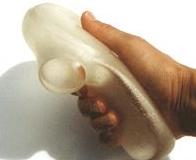
ATI engineers utilize decades of first-hand experience with rapid prototyping, machining, sheet metal forming and molding processes to select and employ the appropriate prototype solution to meet the prototyping objectives with regard to form, function, lead time and cost.
Many prototyping needs can be served well by the relatively new technology of rapid prototyping. Rapid prototyping (RP) is distinguished from traditional manufacturing processes by being an additive or layered process. Rather than starting with a solid block of material and working down to a part, RP involves depositing material layer by layer until the overall geometry is achieved. The result of the process is a solid model of the designed part that allows for the same type of evaluation that has been achieved in the past through other, often more costly and time consuming, prototyping methods. Below is a comparison of a few common RP technologies.
| Pros | Cons | |
| SLA (Stereolithography Apparatus) |
|
|
| SLS (Selective Laser Sintering) |
|
|
| FDM (Fused Deposition Modeling) |
|
|
| EBM (Electron Beam Melting) |
|
|
All rapid prototyping technologies offer the advantages of prototypes that can be made in a short period of time (typically within one day) and the shape of the parts is not limited by the process. One disadvantage of rapid prototyped parts is a restriction on part size.
To broaden the usefulness of the RP process, some rapid prototypes can be refined through the use of post operations such as CNC machining. CNC (Computer Numerical Control) machining may also be preferred as a stand-alone prototyping method, usually when making parts in metal or rigid plastics. Many rapid prototypes are strong enough to be used as masters for low pressure molding operations.
Whether RP, CNC, sheet metal, or a low volume molding process, either individually or in combination, is an appropriate solution, ATI is available to provide guidance and support for prototype fabrication as a stand-alone need or as a step in the design process.